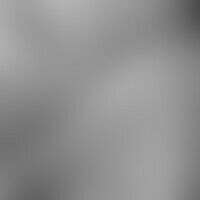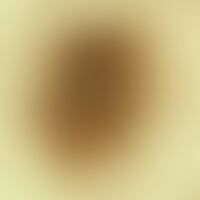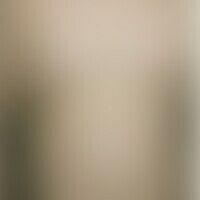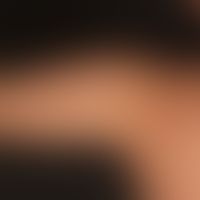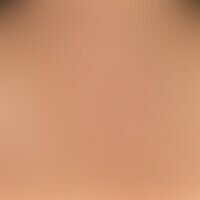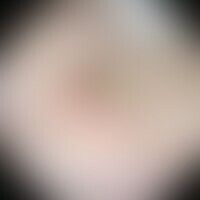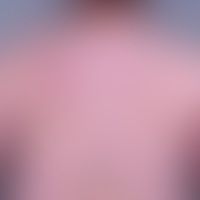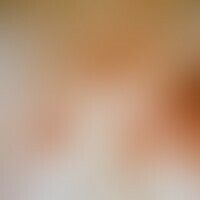Image diagnoses for "Torso"
551 results with 2173 images
Results forTorso
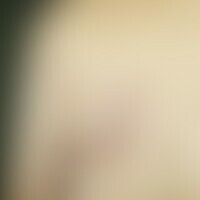
Melanoma cutaneous C43.-
Melanoma, malignant, foudroyant, diffuse, cutaneous metastasis around the older operation scar in the area of the thoracic wall; primary tumor: nodular melanoma pT3a; post-operative 3 years ago.
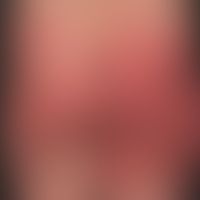
Symmetrical drug related intertriginous and flexural exanthema L24.4; L25.1
SDRIFE: large, acute urticarial plaques with blurred edges, with a certain probability caused by the ingestion of a taxane cytostatic drug.
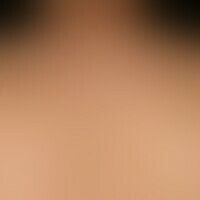
Extrinsic skin aging L98.8
Chronic photo-aging of the skin: multiple irregularly configured pigment spots of varying colour intensity; furthermore, splashlike depigmentation.
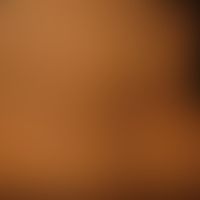
Acanthosis nigricans benigna L83
Acanthosis nigricans benigna: blurred brown-black spots and plaques. the plaques are characterized by a slightly sooted, leathery surface. no subjective symptoms.
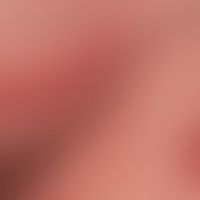
Mycosis fungoides C84.0
Mycosis fungoides of the "pagetoid reticulosis" type. slight tendency to progression. blander clinical course over years with intermediate complete remission. typical clinical picture with the girlad-like limitation
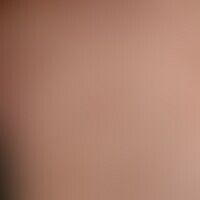
Scabies nodosa B86.x
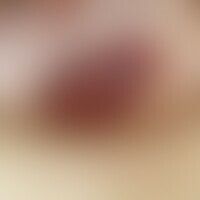
Lichen sclerosus (overview) L90.4
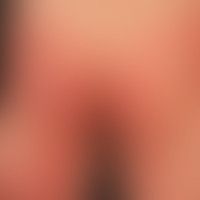
Lupus erythematosus subacute-cutaneous L93.1
lupus erythematosus, acute cutaneous. within a few weeks developing exanthema with papules, homogeneous coin-shaped plaques confluent in places (see also Rowell`s syndrome). no feeling of illness. high titrated SSA-Ac.
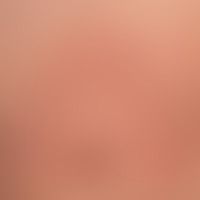
Parapsoriasis en plaques large L41.4
Parapsoriasis en plaques large: asymptomatic, moderately sharply defined disseminated patches and easily eliminated plaques.
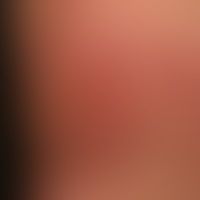
Erysipelas A46
Erysipelas, acute: Acute reddened and painful, large-area, succulent plaque, only blurredly limited, which has existed for 5 days and is accompanied by high fever; inflammation parameters massively increased.
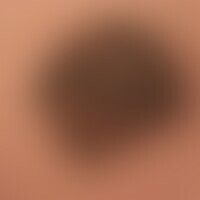
Keratosis seborrhoeic (overview) L82
Verruca seborrhoica: brown-black, broad-based, medium-strength node with a fielded surface.
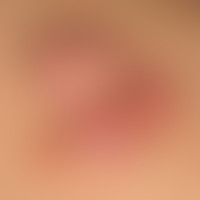
Keloid (overview) L91.0
Keloids: bulbous conglomerates of solid, surface-smooth, skin-coloured and also reddish, broad-based, touch-sensitive lumps.
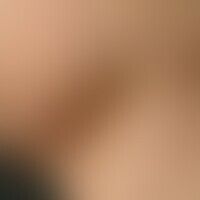
Neurofibromatosis (overview) Q85.0
type I neurofibromatosis, peripheral type or classic cutaneous form. since puberty slowly increasing, soft, 0.2-0.8 cm large, skin-coloured or slightly brownish, painless, flat or hemispherical papules and nodules in a 42-year-old patient. the bell-button phenomenon can be triggered (the papules can be pressed into the skin under pressure). café-au-lait spots up to 7 cm in diameter also appear on the trunk.
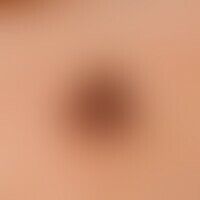
Nevus melanocytic (overview) D22.-
Nevus, melanocytic. type: Acquired dysplastic melanocytic nevus. solitary, chronically inpatient, approx. 0.7 cm high, light accentuated spot localized at the right temple, smooth, reticularly decomposed with differently graded brown tones, blurredly limited in a 50-year-old female patient.
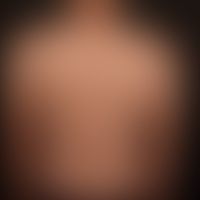
Graft-versus-host disease chronic L99.2-
Generalized GVHD:chronic, generalized, poikilodermatic skin changes, with circumscribed calluses, atrophy and reticular hyperpigmentation.

Leprosy (overview) A30.9
Leprosy (overview): Leprosy lepromatosa B (Boderline type) with large-area clearly infiltrated, borderline, anaesthetic and hypopigmented plaques, accompanied by inflammatory leprosy reaction
